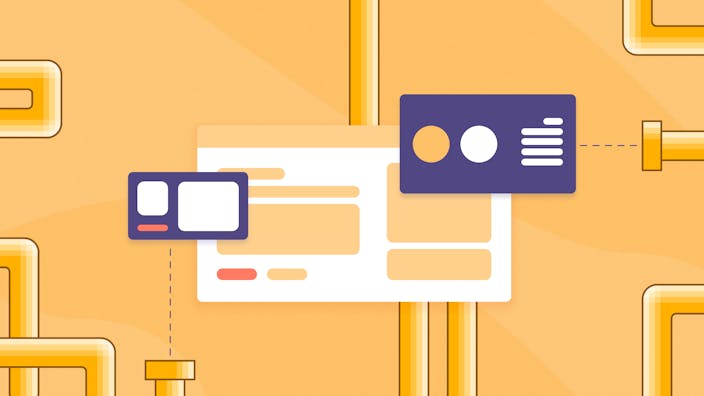In today's rapidly evolving business landscape, technology has become the cornerstone of successful expansion strategies. Companies that effectively harness cutting edge technologies consistently outperform their competitors and achieve long term success. Whether you're a startup looking to scale or an established enterprise seeking new markets, understanding how to leverage technology is crucial for driving business growth.
The power of technology lies not just in automation, but in its ability to create new opportunities and unlock previously untapped potential. From streamlining operations to enabling new business models, technology serves as the catalyst that transforms ambitious expansion plans into measurable results.
The Strategic Foundation of Technology in Business Growth
The relationship between technology and business expansion is multifaceted. For UK-based small and medium enterprises specifically, digital transformation for UK SMEs provides practical strategies supported by government programmes like Made Smarter.
Artificial intelligence machine learning capabilities, big data analytics, and cloud computing have fundamentally changed how businesses operate, compete, and grow. Companies that embrace these technologies position themselves for sustained expansion across multiple dimensions.
NB:
The most successful businesses don't just adopt technology—they strategically integrate it into their core operations to create competitive advantages.
Technology serves as a force multiplier, amplifying human capabilities and enabling businesses to scale operations without proportional increases in costs. From customer relationship management systems that nurture leads more effectively to enterprise resource planning platforms that optimize resource allocation, technology creates efficiencies that directly translate to growth opportunities.
Essential Technologies for Modern Business Expansion
Several key technologies have emerged as critical enablers of business growth:
- Cloud Computing Infrastructure provides the scalable foundation that allows businesses to expand rapidly without massive upfront investments in hardware. Companies can now access enterprise-grade computing power on demand, paying only for what they use.
- Data Analytics and Business Intelligence tools transform raw information into actionable insights. These platforms enable data driven decision making, helping businesses identify new market opportunities, optimize operations, and predict future trends with unprecedented accuracy.
- Automation and Process Optimization technologies eliminate repetitive tasks and reduce human error. From time tracking software that optimizes workforce productivity to automated customer service chatbots that provide 24/7 support, these tools free up human resources for more strategic activities.
Implementing Technology Solutions for Scalable Growth
Successful technology implementation requires a strategic approach that aligns with business objectives. Small business owners often make the mistake of adopting technology for its own sake rather than focusing on solutions that directly support their expansion goals.
The key to effective technology adoption lies in understanding your specific growth challenges and selecting tools that address these pain points while positioning your business for future opportunities. This approach ensures that technology investments deliver measurable returns and contribute to driving business growth.
Document signing processes often become bottlenecks during expansion. Electronic signature solutions eliminate these friction points, enabling faster deal closure and more efficient client onboarding.
Try electronic signatures free for 14 days and experience the difference streamlined processes can make.
Building a Digital-First Culture
Creating a culture that embraces technology is essential for successful expansion. This involves more than just implementing new tools—it requires fostering an environment where employees are encouraged to leverage technology to improve their work and contribute to business growth.
Leadership plays a crucial role in driving this cultural transformation. When executives actively champion technology adoption and demonstrate its value through their own practices, employees are more likely to embrace new tools and processes. This top-down approach accelerates technology adoption and maximizes its impact on business expansion.
Leveraging Data-Driven Decision Making for Strategic Growth
Data driven decisions have become the foundation of successful business expansion. Companies that base their growth strategies on comprehensive data analysis significantly outperform those relying on intuition alone. The ability to collect, analyze, and act on data insights provides a competitive advantage that compounds over time.
Modern businesses generate vast amounts of data from multiple sources: customer interactions, operational processes, market trends, and financial performance. The challenge lies not in collecting this data, but in transforming it into actionable insights that drive strategic decisions.
Big data analytics platforms enable businesses to identify patterns and trends that would be impossible to detect manually. These insights can reveal new market opportunities, optimize pricing strategies, improve customer experiences, and streamline operations for maximum efficiency.
Technology Category | Primary Benefits | Implementation Complexity |
|---|---|---|
Cloud Computing | Scalability, Cost Efficiency | Low to Medium |
Data Analytics | Strategic Insights, Performance Optimization | Medium to High |
Automation Tools | Efficiency, Error Reduction | Low to Medium |
AI/ML Solutions | Predictive Capabilities, Personalization | High |
IoT Systems | Real-time Monitoring, Operational Intelligence | Medium to High |
Customer Relationship Management as a Growth Driver
Customer relationship management systems serve as the nerve center of business expansion efforts. These platforms consolidate customer data, track interactions, and provide insights that enable businesses to nurture relationships more effectively and identify opportunities for growth.
Modern CRM systems go beyond simple contact management to provide comprehensive customer journey mapping, predictive analytics, and automated communication workflows. This functionality enables businesses to scale their customer engagement efforts without proportionally increasing staff.
The integration of electronic signature capabilities within CRM workflows has proven particularly valuable for expanding businesses. By enabling seamless contract execution directly within the customer management process, companies can reduce friction in their sales cycles and accelerate revenue generation.
Technology Integration Strategies for Sustainable Expansion
Successful technology integration requires careful planning and execution. Companies must balance the need for innovation with operational stability, ensuring that new technologies enhance rather than disrupt existing processes.
The concept of a digital transformation journey emphasizes the evolutionary nature of technology adoption. Rather than attempting wholesale changes overnight, successful companies implement technology in phases, allowing time for adaptation and optimization at each stage.
NB:
A managed services provider can be invaluable during technology transitions, offering expertise and support that enables businesses to focus on their core competencies while ensuring successful implementation.
Overcoming Common Technology Adoption Challenges
Many businesses encounter similar obstacles when implementing new technologies. Understanding these challenges and developing strategies to address them is crucial for successful expansion.
Resistance to Change often emerges as the primary barrier to technology adoption. Employees may fear that new tools will make their roles redundant or significantly alter their work processes. Addressing these concerns through comprehensive training, clear communication about benefits, and involving employees in the selection process can significantly reduce resistance.
Integration Complexity poses another significant challenge. New technologies must work seamlessly with existing systems to avoid creating operational silos. This requires careful planning, robust testing, and often custom development work to ensure compatibility.
Cost Management concerns frequently arise, particularly for smaller businesses. However, the total cost of ownership should be evaluated over time, considering not just initial implementation costs but also ongoing operational savings and revenue generation potential.
Measuring Technology ROI and Business Impact
To ensure that technology investments contribute to business expansion, companies must establish clear metrics and measurement frameworks. This approach enables continuous optimization and ensures that resources are allocated to the most impactful initiatives.
Key performance indicators should align with business expansion objectives, measuring both operational efficiency improvements and revenue generation capabilities. Metrics might include customer acquisition costs, sales cycle duration, operational error rates, and customer satisfaction scores.
The measurement process should encompass both quantitative and qualitative factors. While financial metrics provide clear indicators of success, qualitative measures such as employee satisfaction, customer feedback, and operational flexibility also contribute to long-term business expansion success.
Future-Proofing Your Technology Strategy
Staying ahead of the curve requires businesses to anticipate future technology trends and prepare their organizations accordingly. This proactive approach ensures that current technology investments remain relevant and continue to support business expansion objectives.
Emerging technologies such as artificial intelligence, machine learning, and advanced analytics are reshaping business operations across industries. Companies that begin exploring these technologies now will be better positioned to capitalize on their potential as they mature.
Good to know:
The most successful technology strategies balance innovation with practicality, focusing on solutions that provide immediate value while building foundations for future capabilities.
Cloud-native architectures, API-first development approaches, and modular technology stacks provide the flexibility needed to adapt to changing requirements and integrate new capabilities as they become available.
Practical Steps for Technology-Driven Expansion
Implementing a technology-driven expansion strategy requires systematic planning and execution. Begin by conducting a comprehensive assessment of your current technology landscape, identifying gaps and opportunities for improvement.
Develop a technology roadmap that aligns with your business expansion goals, prioritizing initiatives based on their potential impact and implementation complexity. This roadmap should include both short-term tactical improvements and long-term strategic capabilities.
Consider partnering with technology providers who understand your industry and can provide specialized solutions. Electronic signatures, for example, have become essential for businesses expanding into new markets where remote transactions are common. Our platform at Yousign provides the security, compliance, and ease of use that growing businesses need.
Building Internal Technology Capabilities
While external partnerships are valuable, developing internal technology capabilities is crucial for long-term success. This includes building technical expertise within your team and creating processes for evaluating and implementing new technologies.
Invest in training programs that help your team understand and leverage new technologies effectively. This investment pays dividends by maximizing the value derived from technology implementations and reducing dependence on external support.
Create innovation processes that encourage experimentation and learning. This might include innovation labs, hackathons, or pilot programs that allow your team to explore new technologies in low-risk environments.
Transforming Your Business Through Strategic Technology Adoption
The path to successful business expansion through technology requires commitment, strategic thinking, and careful execution. Companies that approach technology adoption as a strategic imperative rather than a tactical necessity position themselves for sustained growth and competitive advantage.
Technology should be viewed as an enabler of business strategy rather than a separate initiative. The most successful implementations occur when technology decisions are made in the context of broader business objectives and growth plans.
The right technology can transform business operations and accelerate growth. The key lies in selecting technologies that align with your specific expansion objectives and implementing them strategically.
Frequently Asked Questions - How to Leverage Technology for Business Expansion
What types of technology are most essential for business expansion?
Cloud computing, data analytics, CRM systems, and automation tools form the foundation of technology-driven expansion. These technologies provide scalability, insights, and efficiency needed for sustainable growth.
How can small businesses effectively use technology to grow without breaking the budget?
Start with cloud-based solutions that offer pay-as-you-scale pricing models. Focus on technologies that directly address your biggest growth bottlenecks and provide measurable ROI.
What are the main risks of adopting new technologies for business expansion?
Integration complexity, employee resistance, and implementation costs are primary risks. These can be mitigated through careful planning, comprehensive training, and phased implementation approaches.
How long does it typically take to see results from technology investments?
Results vary by technology type and implementation scope, but most businesses see initial benefits within 3-6 months, with full ROI typically achieved within 12-18 months.
Should businesses build custom solutions or use existing platforms?
For most businesses, existing platforms offer better value and faster implementation. Custom development should be reserved for unique competitive advantages or highly specialized requirements.
Ready to Accelerate Your Business Expansion?
Transform your document processes and accelerate growth with Yousign's electronic signature solution.








